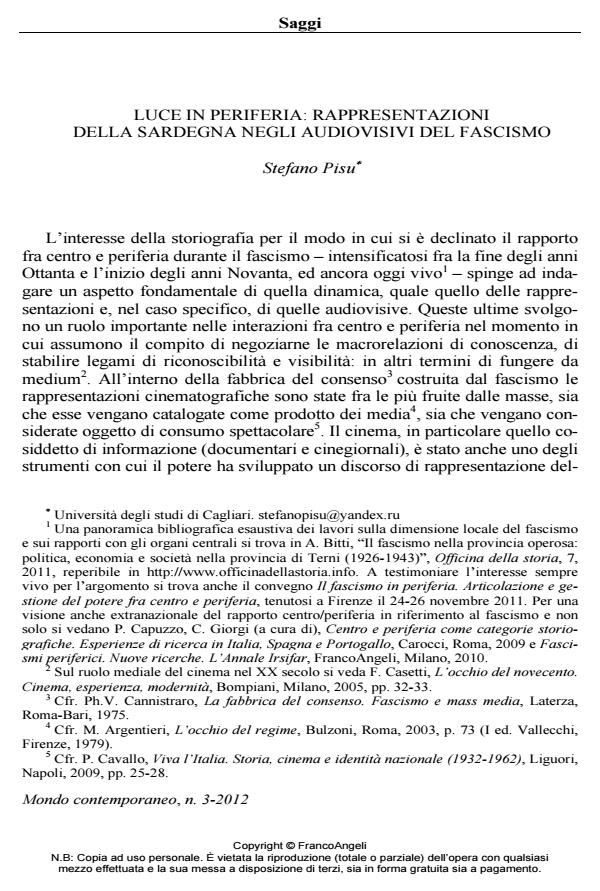Luce on the Periphery: Representations of the Sardinia in Fascism’s Audiovisual Production
Journal title MONDO CONTEMPORANEO
Author/s Stefano Pisu
Publishing Year 2013 Issue 2012/3
Language Italian Pages 26 P. 5-30 File size 437 KB
DOI 10.3280/MON2012-003001
DOI is like a bar code for intellectual property: to have more infomation
click here
Below, you can see the article first page
If you want to buy this article in PDF format, you can do it, following the instructions to buy download credits

FrancoAngeli is member of Publishers International Linking Association, Inc (PILA), a not-for-profit association which run the CrossRef service enabling links to and from online scholarly content.
The paper concerns the cinematographic representations of Sardinia offered by Luce Institute’s documentaries and newsreels in Fascist Italy. The author underlines how Luce’s production on Sardinia is characterized by a sort of double standard: the traditional vision of an idyllic but also backward Island on one hand, and of a more dynamic region, transformed and projected by the Fascist regime into modernity, on the other. Luce’s different representations are connected to the change in the Fascist power agenda: from the 1920’s "ruralist" mythology, which gave visibility to local exoticism, to the new 1930’s climate. After becoming an imperial power and officially a racist State, Fascist Italy could use cinema as a tool of "civilization" also in specific peripheral national areas like Sardinia, which had already been subjected to discriminatory and pseudo-scientific discourses in Liberal Italy.
Keywords: Luce Institute, Sardinia, Fascism, representations, cinema, Italian periphery
Stefano Pisu, Luce in periferia: rappresentazioni della Sardegna negli audiovisivi del fascismo in "MONDO CONTEMPORANEO" 3/2012, pp 5-30, DOI: 10.3280/MON2012-003001